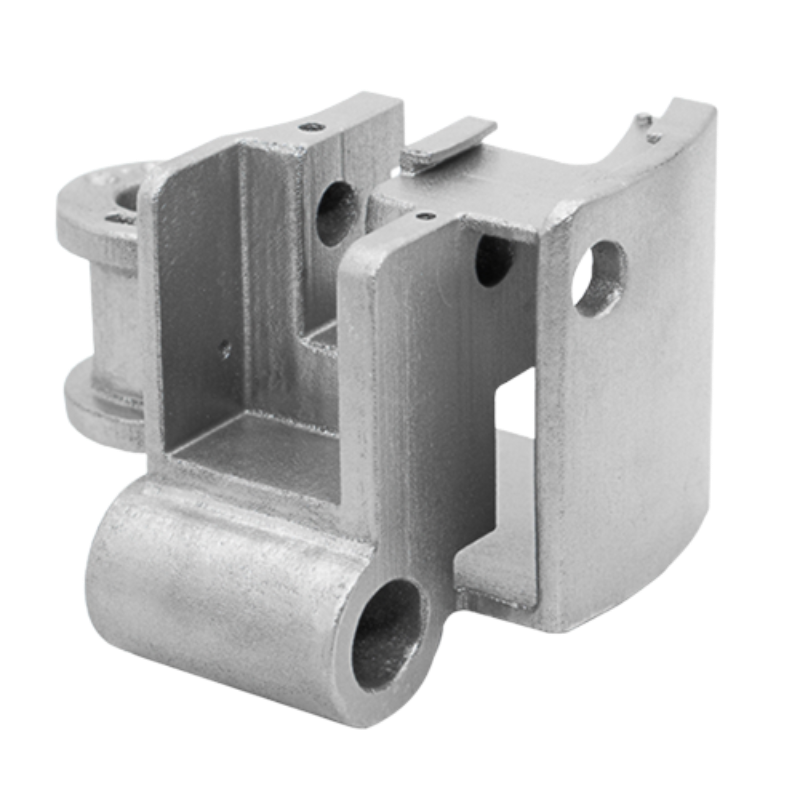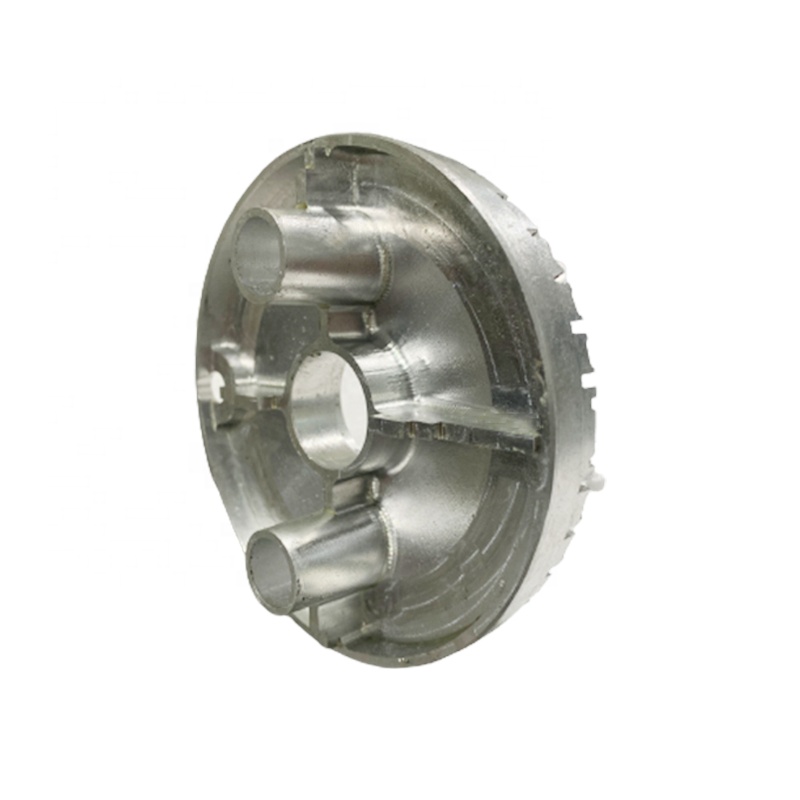We would all like to 3D print in metal, but for now, the equipment to do that is out of reach for most of us. Instead of dealing with powder printers or metal-bearing polymers, [Robert] has a simple solution. Using a process known as mechanical plating or peen plating, he deposits a layer of copper on a PLA print. The results look good, as you can see in the video below.
This isn’t electroplating, although the result is similar. With electroplating, you have to make the 3D part conductive. You also have to deal with wet chemistry and fumes. This process uses a rock tumbler, copper powder, and small ball bearings. Vacuum Cast Parts

The ball bearings hammer the copper into the part, cold welding it to the surface. [Robert’s] first attempt didn´t work well as the copper didn’t stick well. He solved that by dipping the part in acetone. The video says that made the part sticky, but we haven’t found that to be true with PLA. We suspect it served to clean the part, an essential step in mechanical plating.
Mechanical plating is a well-known industrial process. Unlike electroplating, it can plate hard-to-reach recesses. It also doesn’t cause hydrogen embrittlement like traditional electroplating.
If you want to try regular electroplating, we have seen that done many times. If you have patience, you can even use electroplating as a 3D printing process.
What if he electroplated after the powder plating? The powder is conductive and the elctroplating is solid. No need of a laquer finish.
I’ve done some experiments with Copper, and decided that the patina comes from water and (at least mostly) not from the oxygen.
So you would want to put a coating on the project anyway, just to prevent corrosion.
(Unless copper patina is something you want – some people think that the patina gives a nice “aged” look to statues and such.)
I wonder if there is enough copper powder hammered into the surface of the print for it to be conductive (if so, that might make a good base for electroplating something else on top of the copper).
hell, on an only quasi-related note, I wonder if carbon fiber is conductive enough to electroplate with copper. If so that might make for some interesting possibilities including RF shielding carbon fiber composites provided there existed an adequate thickness which was effective, yet thin enough to remain somewhat flexible and not add too much weight.
Most carbon fibre containing filament is still non conductive, although just down to luck it can sometimes have a high resistance.
You do get conductive or ESD filament though, which is probably a much better fit for what you are describing.
I have used a single spool of carbon fiber (like a bundle of 12k strands), left ends loose and ungooped, and gooped and wrapped the middle segment then driven current through the whole mess to use the carbon fiber itself as a heating element to rapidly cure the epoxy. I didn’t do any serious testing on the finished widget as I was mostly just curious if it was possible (no idea if it’s practical for anything more complicated than my simple tube shaped test widget, but it worked).
Carbon fibre composite all by itself is already a pretty good RF absorber, at least at higher frequencies (100 MHz for modest thicknesses). No copper plating required. Even pieces that measure open circuit to a multimeter have enough internal conductivity to absorb essentially all incident RF power. It makes a lousy reflector or antenna though.
This guy is genius! The trick with the Acetone is awesome. This is the missing link to hardcoat and reinforce my prints.
I will try this with glass beads intead of cooper to get a get hard surface. If i understand it right the bearing balls act as a tiny hammers and hammers the cooper powder into the surface of PLA. The acetone liquidify the surface and the bearing balls hammers the powder into the PLA.
If i do this in cycles, add acetone and glassbeads, i should be able to add glassbeads into the PLA to reinforce it.
So like the third cycle with adding acetone and glassbeads should forced the first glassbeads coat to move deeper into the PLA, after 5 cycles i should get a 5mm thick glassbeads reinforced 3d print. Or a open 3d print to stiffen it from inside and outside.
And what if i put 3mm long carbonfiber pieces into the tumbler and the many many tinny hammers evenly coat the surface.
bearing balls as tinny hammers in a thumbler, this is maybe really the missing link how to melt a PLA print press “hammer” stronger material in it without deforming his shape.
ohhh i need to try this
to the experts, any ideas why this couldn’t work?
I wonder if i can put a roll of pla into a bigger thumbler to coat if with cooper powder?
The prints later would look nice.
3D printers are very sensitive to the filament shape and diameter, too thick and it wouldn’t fit and too inconsistent and you will end up with areas of low and high flow which will mess up your pint unless your printer has active flow compensation which very few do. Also metal powder is abrasive, so you would need to make sure you have hardened steel extruder gears and a hardened nozzle.
You would be much better just going with a filament that already contains metal particles, there are quite a few different brands making them now.
This is really interesting. Using tech old for new tech. I definetly will try this with coarser material to close the gaps between layers of a unclean 3d prints, definetly less work than sanding it. Wait a minute i sand a model with a thumbler :-D
Thanks for the article, this old stuff gives sometimes inspiration for the actual problems.
Yes the copper ought to be a good base for further plating. Many electroplating operations start with a layer of copper. I did an electroplating science project in 8th grade (took 2nd in our science fair), and copper is often used to plate metals that things like silver won’t plate onto easily.
Not the same thing, but tangently related, Breaking Taps did a really amazing build of some scale NASA rocket boosters where he used electroplated copper over wax to build up a machined part and make hollow cooling cavities.
https://youtu.be/H4YZxb2E5PA?feature=shared
Honestly electroplating is pretty simple, paint with conductive paint, throw in the copper acetate bath with a copper anode, run electricity through it, hook up a 50$ “electroforming rectifier”. I had an ex that that is her sole business and does pretty well with it. I do recommend using filter bags on the anodes as you can clean them out and keep using the same copper acetate much longer.
I don’t understand the reaction of acetone with PLA. I am under the impression that acetone smooths ABS, but does not affect PLA.
Acetone softens PLA, but doesn’t dissolve it the way it does ABS.
https://www.agarscientific.com/media/import/AGG303E-Feb18.pdf ‘Aquadag’, the original Acheson conducting coating, is a very useful general purpose material for this group of applications. Coatings formed with ‘Aquadag’ are suitable for electrostatic screening, as electrodes in many types of electronic and allied equipment such as dose meters, ionisation chambers and Geiger counters and for the prevention of corona discharge at sir gaps adjacent to stressed dielectric materials.
Unfortunately, the resistance is rather high. For “small” objects, I have used “Wire Glue” to coat plastic for electrical conductivity; but have not tried to electro-plate.
Likely, a lower resistance (more expensive) product could be selected: https://mgchemicals.com/category/conductive-paint/conductive-spray-paint/
Was hoping this was Yogurt from Spaceballs. Missed opportunity!
Please be kind and respectful to help make the comments section excellent. (Comment Policy)
This site uses Akismet to reduce spam. Learn how your comment data is processed.

Cnc Printing Services By using our website and services, you expressly agree to the placement of our performance, functionality and advertising cookies. Learn more